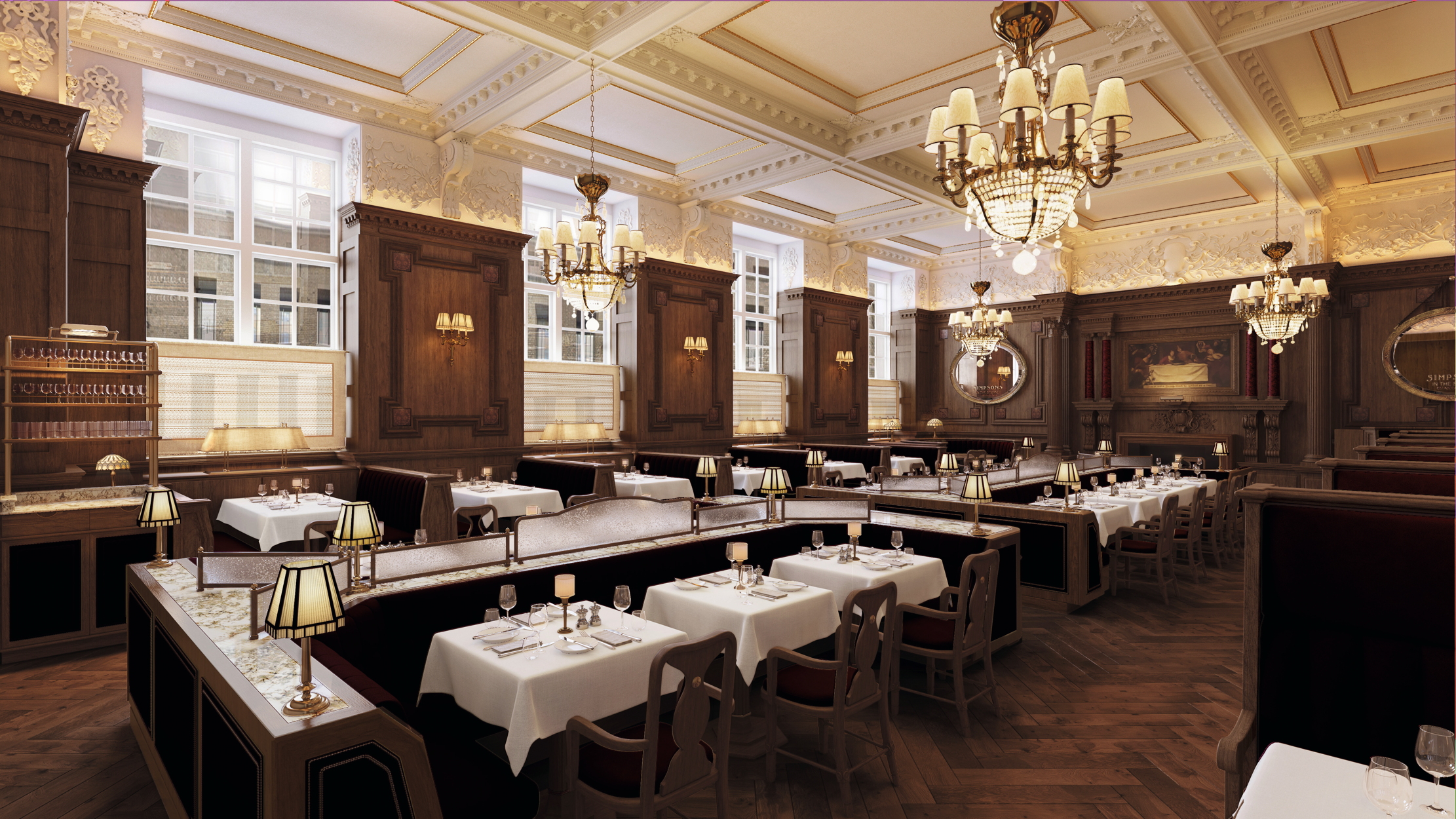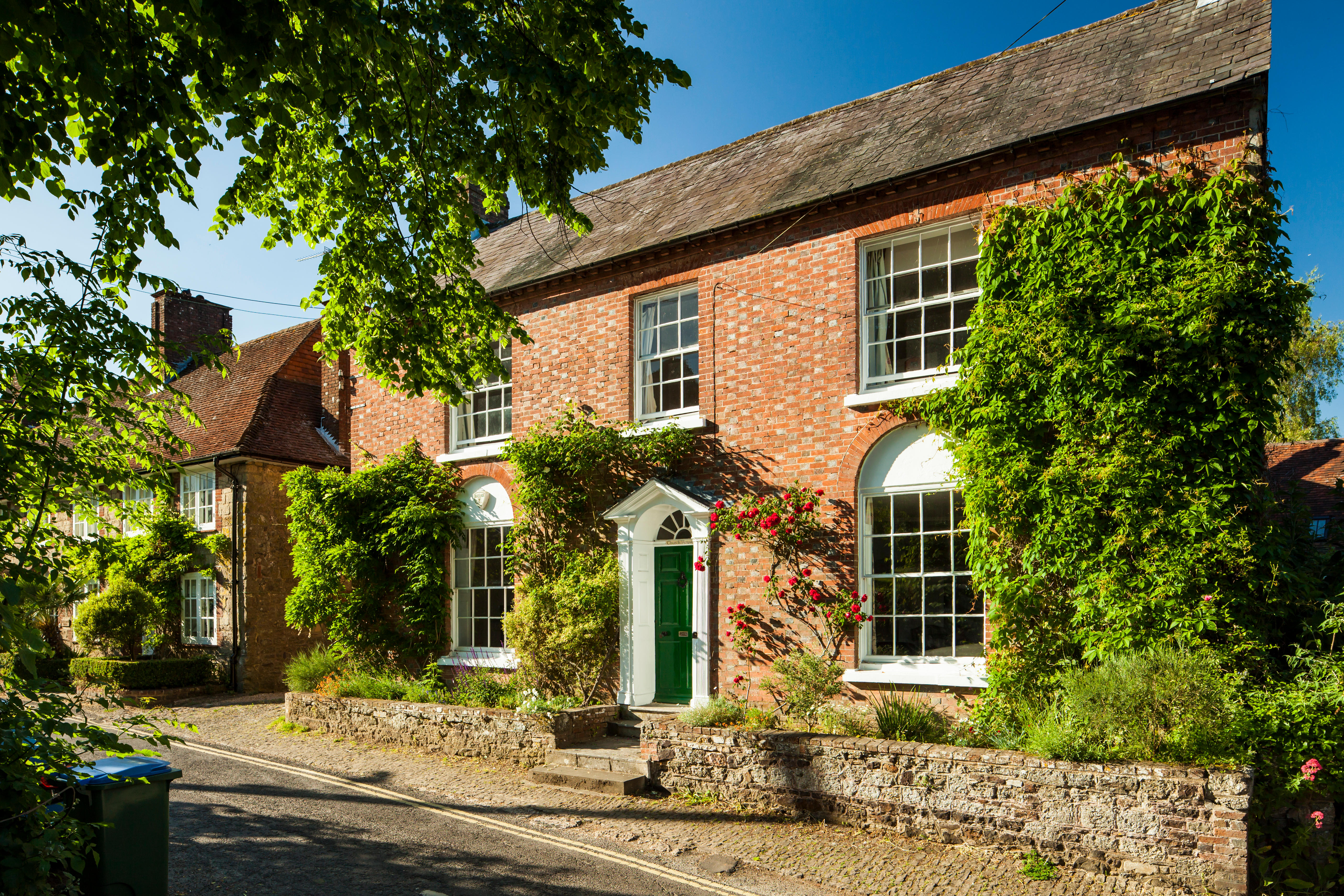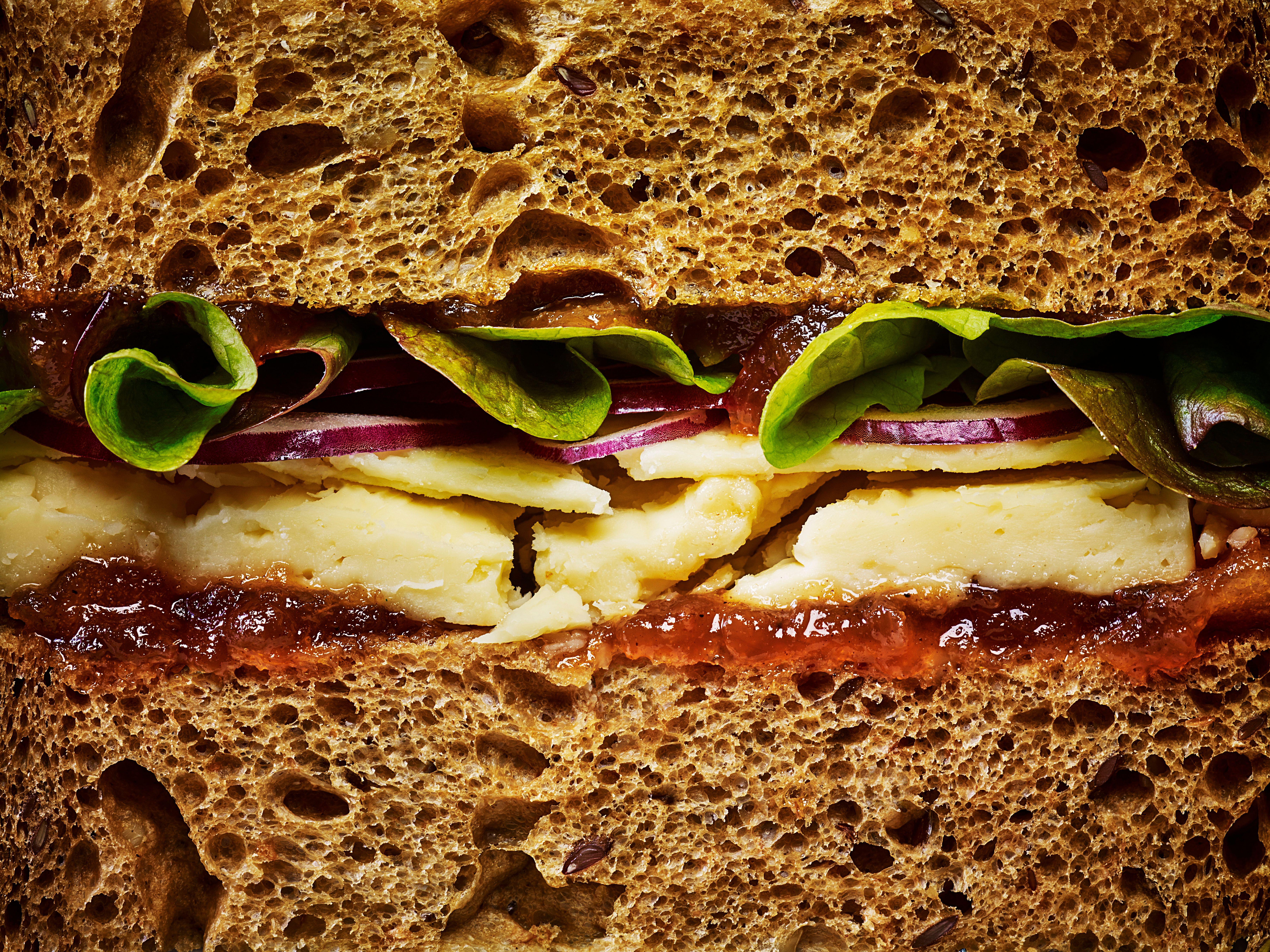No more froths, no more foams, no more tweezers. Classic dining is making a comeback. Thank god
From prawn cocktail and Arctic roll to starched tablecloths and ‘nicotine cream’ on the walls, it’s out with the new and in with the old in the restaurant world


The direction in which we travel is often a response to the headwinds we’re facing. At present, the geopolitical gusts feel as blustery as they’ve ever been; it’s all rather End Of Days. In times of uncertainty, comfort is found in the familiar and nowhere is this more true than in restaurants.
Chefs are downing their tweezers in favour of food that doesn’t need explaining as it’s served and even dining rooms look more like they used to: low lighting, dressed-up waiters, reassuringly crisp white tablecloths and seating that is actually comfortable. None of this is in the idle name of nostalgia or owing to a deficit of creativity, but is because it’s what diners want.
‘It’s really resonated — in fact, it’s been one of our most popular menus, with hundreds of orders in the first month alone,’ declares Jamie Shears, executive chef at Mount St Restaurant in Mayfair, London W1. He’s talking about the decidedly old-school three-course set menu he launched over the summer: prawn cocktail, a chicken vol-au-vent with mash and a slice of strawberry-swirled Arctic roll. It has gone down a storm — visiting on a Monday evening during peak holidaying-abroad season, every table was full, with some occupants visibly moved by their transportive nursery-luxe puddings.

Simpson's in the Strand will reopen under the watchful eye of Jeremy King sometime in early 2026.
Where did it all begin? Perhaps at Bouchon Racine, which opened in late 2022 in Farringdon, EC1, a revival in a way of a Knightsbridge favourite that closed in 2015. The man behind both is Henry Harris, a classicist cook of extraordinary talent. In a simple room of dark floorboards, white tablecloths and a blackboard menu handwritten in chalk, he offers dishes such as coarsely cut chicken-liver pâté, rabbit in mustard and côte de boeuf with a Béarnaise. The wine list is dedicated to France; there’s also lots of Armagnac and Pernod and other dangerous bits. Nothing challenging, nothing too expensive. Culinary boundaries have not been pushed. It is the sort of experience recognisable even to those whose interaction with French culture goes no further than a few reruns of ’Allo ’Allo!. Yet critics and chefs raved — top marks from The Times, Guardian, Telegraph and Standard. Accolades flew in. ‘The beauty of brown food is back at Bouchon Racine,’ declared Nigella Lawson.
Not that it ever went away at the old-guard proper, which has returned to the ascendant. Getting a table at Oslo Court, that extraordinary 1970s time capsule on the ground floor of a block of flats in St John’s Wood, NW8, requires near military levels of strategising, such is the demand for Melba toast and steak Diane. Harrogate tea room Bettys, with its unapologetically Edwardian menu of fancies and custard slices, is wildly popular on social media, as well as attracting pilgrims from all over the country to North Yorkshire. Simpson’s in the Strand, WC2, which counted both Sherlock Holmes and his creator as admirers, will soon be serving roasts on silver-domed trolleys once again under the watchful eye of Jeremy King (formerly of the Wolseley, now channelling the spirit of Le Caprice on its old site at Arlington, SW1). The Roux family’s Waterside Inn, overlooking the Thames in Bray, Berkshire, has barely changed since it first earned three Michelin stars in 1985, but it doesn’t need to.
'Part boarding-school dining room, part rural railway-station refectory, it’s hard to imagine anywhere less fussed by the zeitgeist'
Then there’s Sweetings, the venerable, lunch-only seafood restaurant in the City of London, EC4, which still looks much as it did when it opened in 1889, from the faded cricket-team photos and caricatures of long-forgotten dignitaries on the walls to the menu of fish pie, smoked salmon with capers, slices of brown buttered bread and absolutely no coffee or tea, only more booze. It has never been more popular: the queue seems to get going shortly after breakfast and the ‘nicotine cream’ of the walls, developed organically before the 2007 smoking ban, has been seized on by interior designers custom-mixing paint to match it. Part boarding-school dining room, part rural railway-station refectory, it’s hard to imagine anywhere less fussed by the zeitgeist, but its resistance to trend, its confidence in the old ways, has never felt more appealing. You know what you’re getting with Sweetings.
That, says Tatler restaurant critic Fay Maschler, who has assessed the scene for more than 50 years, is the point. ‘Recherché ingredients, unfamiliar spicing and exigent authenticity is not perhaps the thrill the restaurant chef and management think it is. Far too many constructs, such as small plates, service when it’s ready, tasting menus — especially tasting menus — suit the kitchen, not the customer. The annoyance is worsened when they are presented as exciting and modern.’ Her sentiments are pithily echoed by Gavin Rankin, the restaurateur behind royal favourite Bellamy’s in Mayfair, W1. ‘People are fed up: they ought to be allowed to choose what they want to eat, not what someone else thinks they ought to. When they come out from a meal, they don’t want to feel hungry and at the same time deprived of a couple of hundred quid.’
Exquisite houses, the beauty of Nature, and how to get the most from your life, straight to your inbox.
During tough times, we all look to old friends — even restaurant critics. When Jay Rayner left The Observer for the Financial Times, his debut review was an affectionate letter to Rules, WC2, London’s oldest restaurant. Both The Times and the Standard have recently written up Daquise, a Polish restaurant in South Kensington, SW7, which opened just after the Second World War. With its dumplings and borscht and dumb waiters, its appeal is legendarily wide — Jeremy Clarkson names it as a favourite — but it is also where bright young 20-somethings go to let their hair down.
'It’s a relief nowadays to be somewhere so determinedly of the analogue world: the whole package, from the soothing hush in the dining room to the total lack of 5G signal that makes it almost impossible to plonk your phone on the table and get drawn into emails or doomy headlines'

The Devonshire's prawn langoustine cocktail.
Then there’s Wiltons in St James’s, SW1, founded in 1742 and on its current premises since the 1980s. It is known for its Dover sole and Stilton soufflé, for serving Meursault by the case-load and for being a kind of immersive advertisement for Turnbull & Asser shirts. Margaret Thatcher was often in. Suddenly, it’s a hit with a younger set, even doing a deal with this year’s London Fashion Week. It’s a relief nowadays to be somewhere so determinedly of the analogue world: the whole package, from the soothing hush in the dining room to the total lack of 5G signal that makes it almost impossible to plonk your phone on the table and get drawn into emails or doomy headlines.
None of the above comes as a surprise to the landlord of The Devonshire, W1, Oisin Rogers. ‘When I look at the most successful restaurants in town that have been around for a while, the dishes that people eat there really are reminiscent of classic, British, brown, delicious cooking — and the chances are, if you order something in any of those restaurants, it’s going to be really great.’
His own pub, on the edge of Soho, proves the point: a four-storey behemoth, famously booked out for months on end, its menu (hand written) opens with pea-and-ham soup and potted shrimp before moving onto the likes of hotpot and suet puddings. The building itself, which dates from 1793, has been lovingly restored to its burnished former glory.
Ground is not being broken here and yet The Devonshire may be one of the most sought-out restaurants in the country, even 18 months after opening. There’s a winning formula, which to my mind is this: food everyone might want to eat, at justifiable prices, in a room that makes you feel good. You wonder why anyone deviated from it in the first place.
David Ellis is the restaurant critic for the Standard, and editor of the food and drink pages. He was previously a columnist for the Daily Telegraph and The Independent, and has written for or appeared as a commentator in the Financial Times, the New York Times and the Guardian and various, less salubrious publications. He is an avid collector of hangovers.
-
 Is this the end of the Forever Home?
Is this the end of the Forever Home?The classic dream of finding a family house in which you can settle down, raise a family and grow old has never been harder to obtain. So has the concept of the 'Forever Home' had its day? Annabel Dixon reports.
-
 HO HO House of Commons: If I had to buy all of my Christmas presents from Parliament this is what I’d get and for who
HO HO House of Commons: If I had to buy all of my Christmas presents from Parliament this is what I’d get and for whoThe House of Common’s gift shop has got everything from a plushie of Attlee, the Speaker’s miserable looking cat, to a rubber duck that pays tribute to the mighty work of the Suffragettes.
-
 'It is hard to beat the excitement of watching a peregrine you have trained stoop from 1,000ft, going more than 100mph' — the complicated world of falconry
'It is hard to beat the excitement of watching a peregrine you have trained stoop from 1,000ft, going more than 100mph' — the complicated world of falconryA combination of spellbinding sport and profound empathetic connection, falconry–a partnership in which the bird maintains the upper hand–offers a window into ‘the deeper magic’.
-
 What is everyone talking about this week: More than half the country owns a pet and nearly half our marriages end in divorce — no wonder pet-nups are on the rise
What is everyone talking about this week: More than half the country owns a pet and nearly half our marriages end in divorce — no wonder pet-nups are on the risePet-nups, a formal agreement between couples over what should happen to their pets in the event of a split, are on the rise.
-
 Haute dogs: How fashion’s finest would dress 11 dogs and one very spoilt cat if only they had the chance
Haute dogs: How fashion’s finest would dress 11 dogs and one very spoilt cat if only they had the chanceWe’ve matched some much-loved breeds to the designers that share their history, temperament and vibe — because why not. Illustrations by Tug Rice.
-
 Baby, it’s cold outside (even if you have a natural fur coat): How our animals brave the winter chill
Baby, it’s cold outside (even if you have a natural fur coat): How our animals brave the winter chillWhen the temperature drops, how do Britain’s birds, beasts and plants keep the cold at bay? John Lewis-Stempel reveals Nature’s own thermals.
-
 A vineyard for sale on the slopes above 'the best beach in Britain' is for sale at just £650,000
A vineyard for sale on the slopes above 'the best beach in Britain' is for sale at just £650,000In the beautifully unspoilt Devon village of Bantham, an award-winning vineyard is for sale. Toby Keel takes a look.
-
 The nine best sandwiches in London, tried, tested and digested
The nine best sandwiches in London, tried, tested and digestedThe sandwich is back and it's bigger and better than ever. David Ellis reveals where to find the best ones in London.
-
 'Someone once proffered a tray and said to me: "Would you like an eat?" I’m not sure I’ve ever seen that person again': A snob's guide to canapés
'Someone once proffered a tray and said to me: "Would you like an eat?" I’m not sure I’ve ever seen that person again': A snob's guide to canapésTeeny, tiny food can throw up some big problems, says our modern etiquette columnist.
-
 Yorkshire’s bravest and most charming gentleman — the Airedale terrier
Yorkshire’s bravest and most charming gentleman — the Airedale terrierBred on Yorkshire’s riverbanks to face otters, snakes and even enemy fire, the Airedale has gone from the trenches of war to the hearts and homes of presidents and movie stars.
